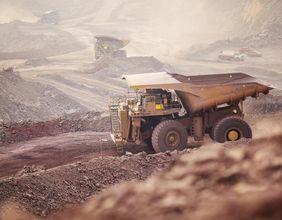Pilbara Minerals (ASX:PLS) has recently released its financial results for the fiscal year 2024, shedding light on some of the challenges the company faces in the current lithium market. The results indicate a significant decline in profitability and revenue, reflecting broader industry trends and operational hurdles.
Financial Overview
- Revenue: $1.3 billion, down 69% year-on-year.
- EBITDA: $558 million.
- Net Profit: $256 million, marking an 89% decrease from the previous year.
- Spodumene Sales Price: US$1,176 per ton, a 74% decrease year-on-year.
- Spodumene Sales Volume: 707,000 tons, up 16% year-on-year.
The decline in revenue and net profit is partly attributed to a decrease in spodumene sales prices, which have fallen significantly. The average sale price for spodumene concentrate in FY24 was US$1,176 per ton, compared to US$840 per ton in the first quarter of FY2025. This decline suggests potential challenges for Pilbara Minerals in maintaining profitability in the coming year.
The company's FY24 results were bolstered by higher lithium prices during the first half of the year, specifically in the third and fourth quarters of 2023. However, with the current Chinese spot price for spodumene concentrate (SC6) at around US$750 per ton, Pilbara Minerals faces pressure. It is anticipated that the company may struggle to achieve profitability in FY2025, given the lower prices and production costs.
Operational Insights
Pilbara Minerals operates the Pilgangoora project, which has faced several operational challenges. The processing plant uses older technology and has experienced issues with water quality and ore blending. While many of these issues have been addressed, the project continues to contend with lower-grade ore, which impacts production costs.
In contrast, Greenbushes, another major player in the lithium sector, benefits from higher-grade ore. The Greenbushes project boasts a feed ore grade of 2.2% and maintains a cost of US$225 per ton. Similarly, Lithium Australia (ASX:LTR) operates with high-grade ore, which helps in maintaining low processing costs, offering a significant advantage over lower-grade projects.
Future Outlook
Lithium Australia is actively processing ore mined during the construction of its plant, which includes a mix of high-grade and lower-grade material. The company is now focusing on ore from the Kathleen Corner area, which includes high-grade pegmatites with grades potentially above 1.6%. The underground mining decline has reached a high-grade zone with ore grades exceeding 2%.
This potential for high-grade ore provides an opportunity for improved profitability and operational efficiency. Unlike Pilbara Minerals, which primarily deals with open-pit mining, Lithium Australia’s underground operations enable access to higher-grade ore that can be processed more cost-effectively.
The lithium sector is experiencing significant price fluctuations and operational challenges. Companies like Pilbara Minerals are navigating a complex landscape, where higher production costs and lower prices create financial pressures. Meanwhile, competitors with access to higher-grade ore, such as Greenbushes and Lithium Australia, are better positioned to capitalize on their resources.
As the lithium market evolves, companies will need to adapt to shifting dynamics and seek ways to enhance efficiency and profitability amidst fluctuating prices and operational costs.





